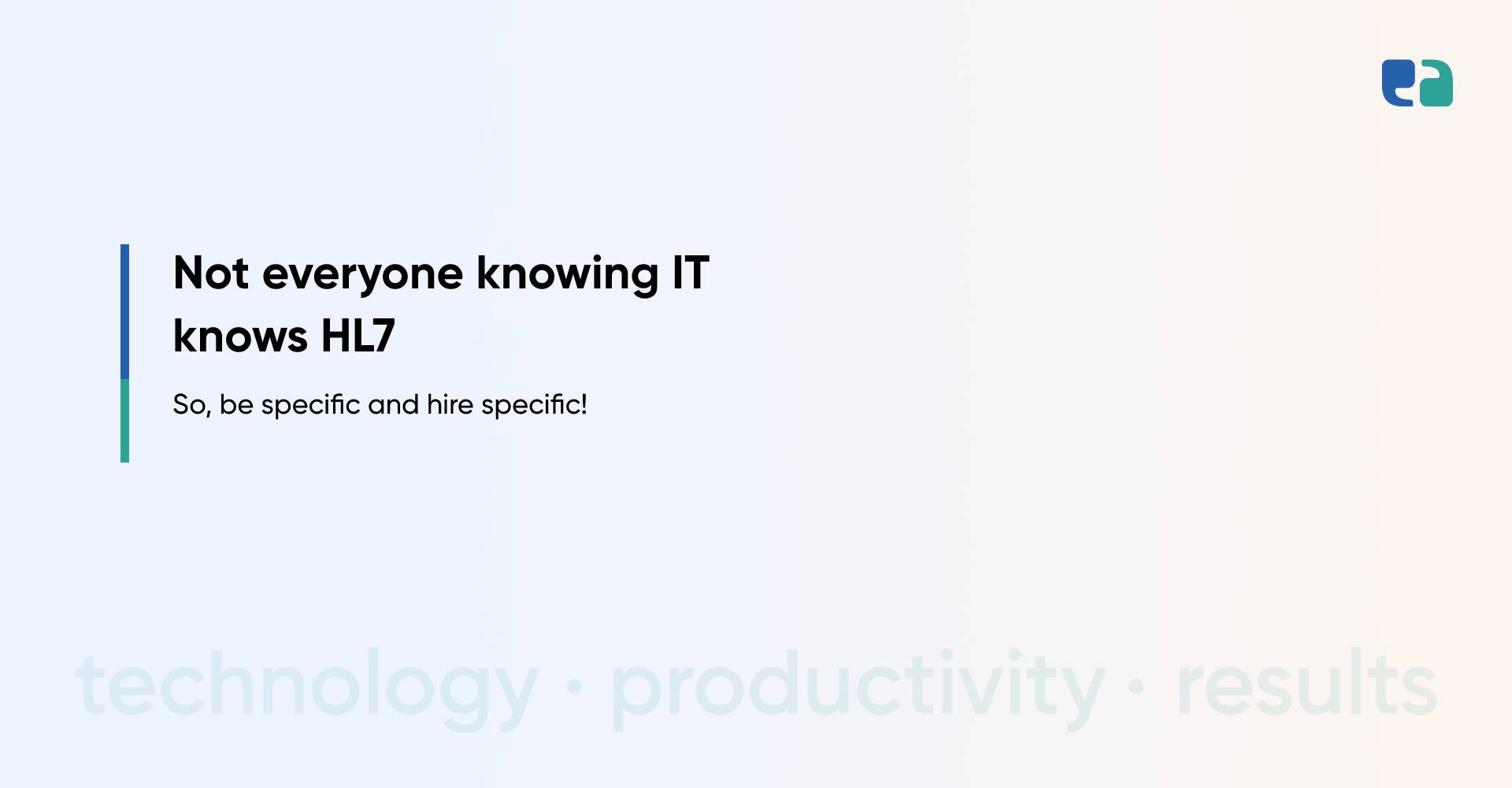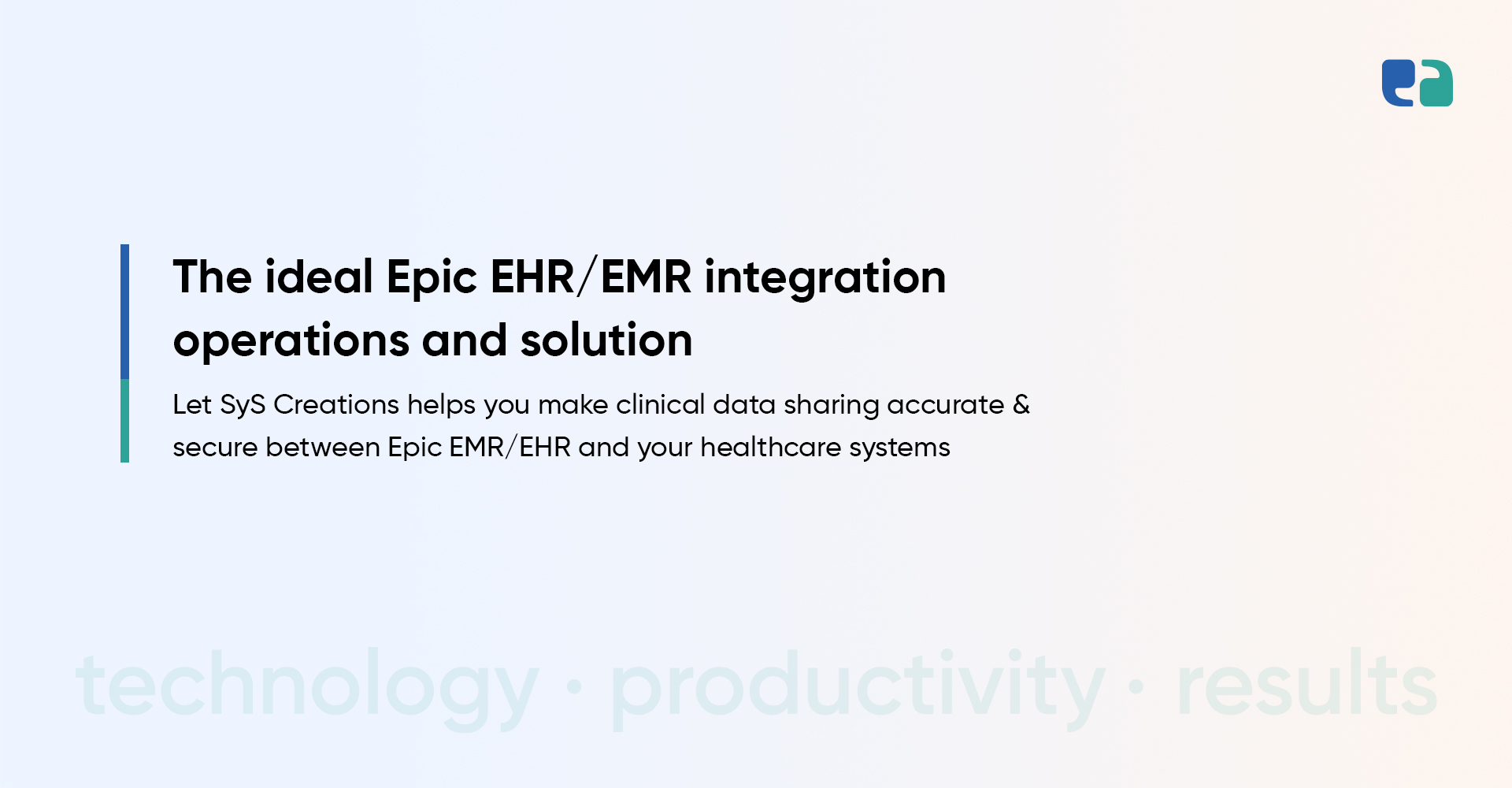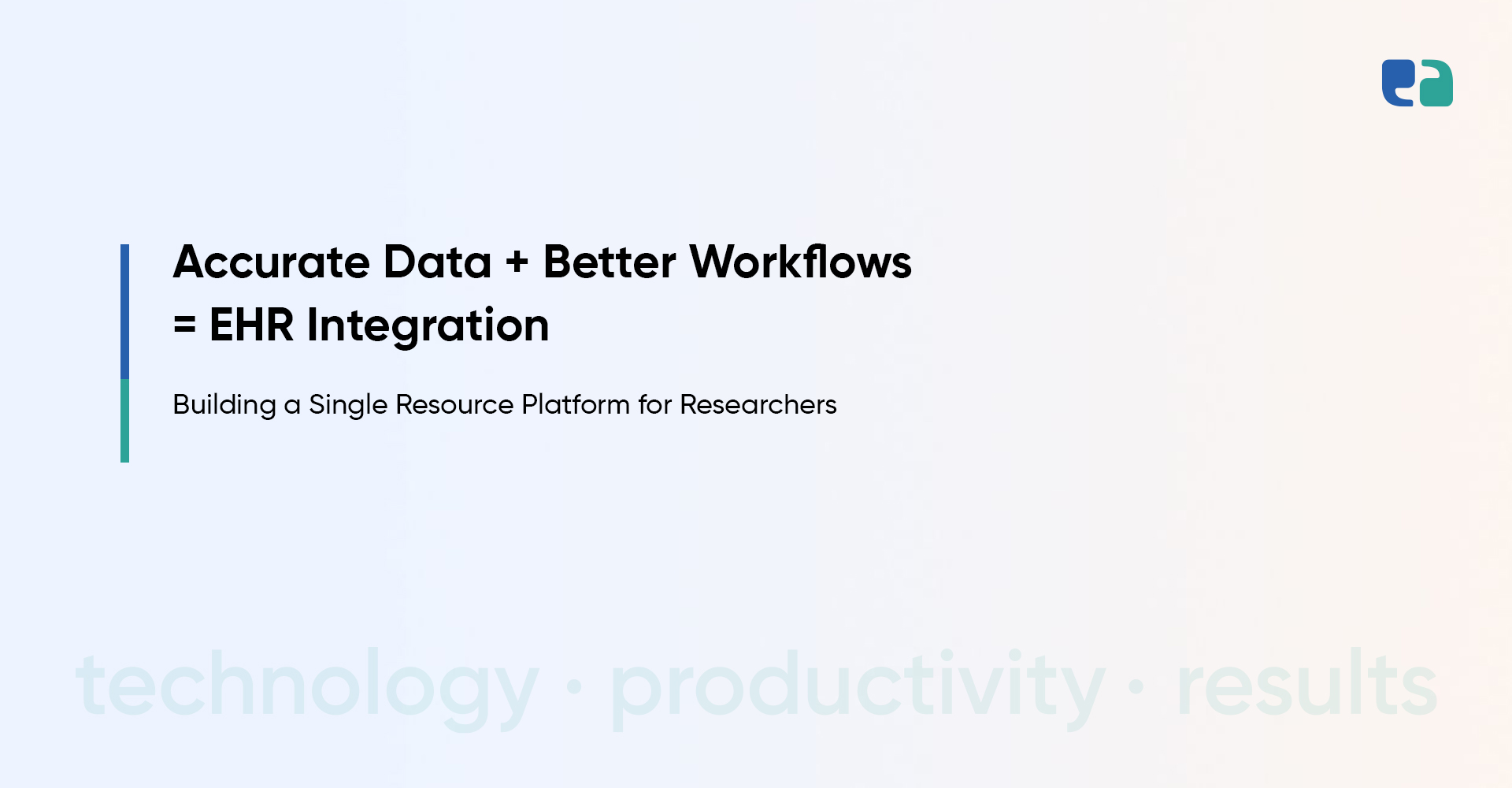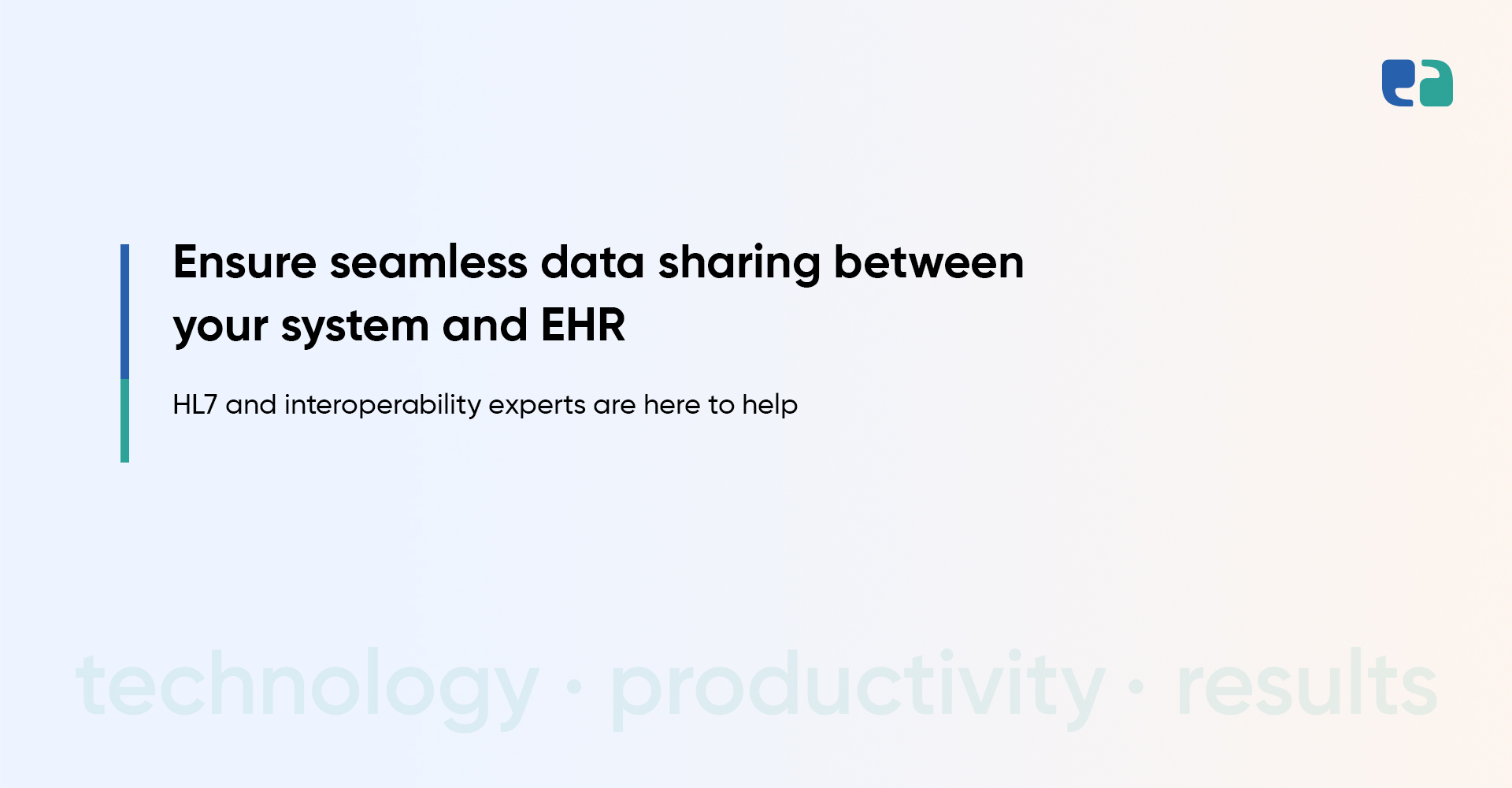The biggest challenge of healthcare IT remains the same – HL7 integration.
But today, by answering your frequently asked questions regarding HL7, we will attempt to make you aware of the HL7 and will also share our HL7 expertise.
So, let’s begin.
What is HL7?
HL7 or Health Level 7 is a communication or data-sharing protocol that consists of several data-sharing standards widely adopted and implemented in the healthcare ecosystem across the globe.
In other words, HL7 makes sure that when clinical data is being shared between two healthcare digital systems, the shared clinical data must be received at the receiving front in an already defined format to avoid data anomalies which can be life-threading in healthcare.
Why is HL7 Required in healthcare?
HL7 is a very crucial pillar of the healthcare ecosystem.
Without it, there will be no standardization while sharing and receiving clinical data.
And with no standardization, clinical data will surely lose its authenticity & accuracy and every clinician will comprehend that clinical data in his own way which is very lethal.
Let’s now understand the same thing from a technical perspective.
Two healthcare digital systems aren’t made for each other.
Thus, there are by default several interoperability issues which do not let those 2 systems communicate and collaborate accurately and efficiently.
The only workable solution here is removing all interoperability issues and to remove them, you must apply some sort of standards.
So, that group of standards is called HL7 and without these standards, you can never achieve interoperability between two integrated healthcare systems.
When should you consider HL7 integration?
HL7 comes into the picture when there is integration required between two or multiple healthcare digital solutions such as EHR, PACS, healthcare apps, LIS, etc.
So the simple answer to your question is, when there is healthcare integration, there is HL7.
But if you are interested in knowing more about it, let us give you an example.
Suppose, you have built a telehealth app with a vision to let providers deliver quality care completely virtually to patients.
But to deliver quality care, providers must have access to the clinical data of the patients which are stored on EHR only.
Now, you have two options.
Option #1: You can choose integration between your telehealth app and EHR to let providers access EHR clinical data directly from the mobile app.
Option #2: You can choose no integration and leave providers with no choice but to use telehealth and EHR solutions simultaneously while delivering the care.
Of course, you choose option 1 as it adds value to your telehealth app.
So, got an answer to your question? – HL7 is there when there is healthcare integration!
What is the HL7 interface and what’s its role?
Before we move forward, you must understand the fact that both HL7 and HL7 interfaces are different things.
HL7 is just a protocol with many standards for clinical data sharing between two or more healthcare solutions. Whereas, the HL7 interface is a program or software which facilitates the data transfer between these two or more healthcare solutions.
The HL7 interface is often called ‘interconnection’ or ‘interaction’ between applications or systems. It has an export endpoint for the sending application and an import endpoint for the receiving application.
What are the Versions of HL7 Standards?
Since the 1980s, HL7 has developed standards for exchanging, integrating, and modeling electronic health information across different healthcare systems.

HL7 standards are divided into three versions.
- HL7 v2 (version 2)
- HL7 v3 (version 3)
- FHIR
You need to understand the difference between version 2 and version 3 to address the interfacing needs of the organization.
1. HL7 v2
It is a healthcare messaging standard for the exchange of patient information and clinical data between systems.
The goal was to provide interoperability between the healthcare systems.
A custom format was created and developed as “ad hoc” over the years.
It used pipe and hat encoding.
This version is often referred to as the “non-standard standard.” it provides 80% interface while for the remaining 20%, interface-by-interface customization is required.
The standard provides flexibility in defining repetition and optional segments, optional fields, and custom z-segments.
2. HL7 v3
Using lessons and best practices from the previous versions, this version was developed over 10+ years.
The goal was to create a context-rich and firmer standard for data exchange between providers and healthcare organizations.
It is primarily referenced when implementing CDA – Clinical Documentation Architecture for exchanging e-documents between patients and providers for quality report initiatives.
Due to its complexity and non-compatibility with HL7v2.X, it is not used by organizations having HL7v2 implementations.
3. FHIR – Fast Healthcare Interoperability Resources
FHIR, pronounced as “fire” is the latest healthcare standard developed by the HL7 organization.
It combines the best features of HL7 v2, CDA, and HL7 v3 and also has significant changes in the previous standards.
It has APIs and data formats for the exchange of resources.
It enables third parties to develop their applications and use data from the EMRs with the help of their servers.
It uses SMART (Sustainable Medical Applications, Reusable Technologies) as an authentication framework for connecting third-party applications with EMRs.
Is HL7 Integration Difficult to Achieve? If Yes, Why So?
Yes, it is difficult to achieve successfully.
And the result is pretty simple.
Because it requires a dedicated skill set and knowledge of healthcare compliance, healthcare interoperability, healthcare systems, healthcare workflows, and overall working of the healthcare ecosystem.
Needless to mention not all developers or IT professionals are healthcare-specific and have specific knowledge of healthcare IT, compliance, and business.
Thus, it is always advisable to hire only healthcare-specific and North American IT professionals who are HL7 engineers and have only been dealing with North American healthcare IT projects.
Only they can deliver you healthcare accuracy, innovation, clinical value, and peace of mind!
What is the Basic Understanding IT Professionals Must Have If You are Hiring Them for Your HL7 Needs?
First things first, not all IT professionals can do HL7 integration.
Thus, you have to pick them up very carefully.
The following are the top criteria you must take into consideration before hiring them.
- Their prior experience with HL7
- Their prior experience with healthcare IT projects
- Their current understanding of healthcare IT
- Their knowledge of healthcare compliance
- Their awareness of integration risks and mitigation strategies
- Their post-project-delivery support
- Their very clear understanding of healthcare workflows
- Their hands-on experience with different healthcare mobile apps and solutions
- Their understanding of the North American healthcare market and user needs
How Do We as a Healthcare IT Company Achieve Successful HL7 Integration Every Time We Do It?
It’s simple.
We achieve it every time with micro-planning, our healthcare expertise, and our healthcare passion.
Here is the process we follow.
- Discovery: We understand your requirements, do an internal assessment to be ready with the perfect team for your project, share a personalized quotation, and sign an NDA.
- Proof of concept: We carry out a technical feasibility study and come up with the most feasible and fastest way to deliver your HL7 project.
- Integration: Our HL7 engineers integrate two or more healthcare systems as per your needs while addressing HL7 standards.
- QA: We aggressively test the integration to find bugs. Later the bug report is submitted to HL7 engineers who fix all the bugs.
- Pilot: We run the integrated systems in pilot mode and brief you about its working in live.
- Support: We provide you with free support for your initial days in the market with a new integrated system.
How Much Does HL7 Integration Cost?
To be frank, it is not practical to predict the cost without knowing your requirements and understanding the technical elements of your healthcare system.
Yes, we can give you any random number and win business, but we neither give false information nor false promises!
The most workable and mature way is to share your requirements with our HL7 lead engineer and then receive a free and personalized quotation from our side within 24 to 36 hours.
You can contact us by filling out our contact form or directly calling us at +1 905 635 7574.



